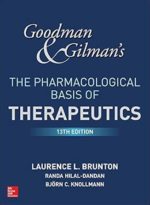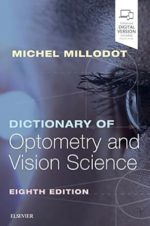This manual covers the full range of communicable diseases in the African region: skin infections, malaria and other vector-borne diseases, infections transmitted via contaminated food and water, tuberculosis and leprosy, diseases transmitted through animals, haemorrhagic fevers and severe acute respiratory illnesses. In this new edition HIV/AIDS has been covered as a chapter on its own. The authors have also included a new chapter titled Emerging and Re-emerging infections in which diseases such as Rift valley fever, Avian flu and Ebola have been discussed. The target for this book include students in medical training colleges, community health workers, nurses, clinical officers, public health officers, teachers of health workers and indeed all who are interested in and who want to learn about communicable diseases in Africa.
COMMUNICABLE DISEASES 4th edition
KSh 3,000.00
This manual covers the full range of communicable diseases in the African region: skin infections, malaria and other vector-borne diseases, infections transmitted via contaminated food and water, tuberculosis and leprosy, diseases transmitted through animals, haemorrhagic fevers and severe acute respiratory illnesses. In this new edition HIV/AIDS has been covered as a chapter on its own. The authors have also included a new chapter titled Emerging and Re-emerging infections in which diseases such as Rift valley fever, Avian flu and Ebola have been discussed. The target for this book include students in medical training colleges, community health workers, nurses, clinical officers, public health officers, teachers of health workers and indeed all who are interested in and who want to learn about communicable diseases in Africa.
Related products
-
Hutchison’s Clinical Methods International Edition, 25th Edition
KSh 6,370.00Hutchison’s Clinical Methods, 25th International Edition, offers comprehensive guidance on patient assessment, clinical examination, and diagnostic skills, essential for medical students and practitioners worldwide.
Sir Robert Hutchison first published his textbook on Clinical Methods in 1897 and this latest edition maintains its reputation as the go-to guide to learn the core skills every clinician needs in their everyday practice.
Medical students and doctors in training will find essential guidance to taking a full history, examining a patient and interpreting the findings. They will learn the art of understanding, contextualising, communicating and explaining, with the doctor-patient relationship firmly at the centre of their practice. These skills remain essential for every doctor, in addition to modern investigative methods.
The book covers basic principles, different patient groups and all the main body systems. Each chapter includes relevant clinical methods and offers guidance for appropriate investigations. New methods and investigations are incorporated into established patterns of clinical practice to offer a fully integrated approach.
This award-winning textbook remains as relevant today as ever and will be treasured by doctors at all levels of training and practice as an outstanding source of learning and reference.
Key Features-
- All chapters carefully reviewed and updated to reflect modern practice
-
- Written by experts in their field and reviewed by an International Advisory Board – content is relevant to a wide international readership including in the Indian sub-continent, the Middle East and Africa
-
- Covers all the main body systems, including the core areas of respiratory, cardiological, gastrointestinal, neurological and locomotor systems
-
- Text organised by system and problem to aid navigation
-
- Chapters can be read individually, to avoid duplication and need for cross-referencing
-
- Tabulated information and diagrams for clarity and conciseness
-
- Tailored to student needs but suitable for doctors at all levels of training and practice
-
- Winner of multiple awards, including the BMA book awards
-
- New appendix describing the clinical features of COVID-19
Author InformationEdited by Michael Glynn, MA, MD, FRCP, FHEA, Consultant Physician, Gastroenterologist and Hepatologist, Barts Health NHS Trust; Honorary Senior Lecturer, Barts and the London School of Medicine and Dentistry; Former National Clinical Director for GI and Liver Diseases, NHS England and William M Drake, DM FRCP, Consultant Physician/Reader in Medicine, Department of Endocrinology, St Bartholomew’s Hospital, London, UK -
-
Rehabilitation Techniques for Sports Medicine and Athletic Training 7th Edition
KSh 17,850.00Rehabilitation Techniques for Sports Medicine and Athletic Training, Seventh Edition is the definitive reference for athletic training students and professionals who are interested in gaining more in-depth exposure to the theory and practical application of rehabilitation techniques used in a sports medicine environment.
Dr. William Prentice and his contributors have combined their knowledge and expertise to produce a single text that encompasses all aspects of sports medicine rehabilitation. Featuring more than 1,000 full-color illustrations, 700 high-resolution videos, and an integrated laboratory manual, this newly updated Seventh Edition provides the athletic trainer with a complete guide to the design, implementation, and supervision of rehabilitation programs for sport-related injuries.
The Seventh Edition includes new and updated information on topics including:
• Pharmacology and the role of medication in pain management and performance
• Nutrition and its impact on rehabilitation
• Rehabilitation techniques for the core
• Roles within the rehabilitation team
• Pathomechanics and epidemiology of common injuries
• Psychological considerations and communication with injured patients
• Tips for documentation from Dr. Prentice -
Mcrae’s Orthopaedic Trauma and Emergency Fracture Management 3rd edition
KSh 4,999.00This book is derived from Ronald McRae’s Pocketbook of Orthopaedics and Fractures, a highly successful ‘survival guide’ for the trainee working in accident and emergency or orthopaedic departments. Retaining the underlying principles of the original editions this comprehensive rewrite and re-presentation provides complete coverage of orthopaedic trauma surgery as relevant to contemporary practice.
-
Goodman and Gilman’s The Pharmacological Basis of Therapeutics, 13th Edition
KSh 19,028.00Goodman & Gilman’s: The Pharmacological Basis of Therapeutics, Thirteenth Edition represents the pinnacle of authority and accuracy in describing the actions and uses of therapeutic agents in relation to physiology and pathophysiology. Goodman & Gilman’s careful balance of basic science and clinical application has guided thousands of practitioners and students to a clear understanding of the drugs essential to preventing, diagnosing, and treating disease.
The Thirteenth Edition includes more than 500 color illustrations, with many new figures emphasizing mechanisms of drug action. More than 30 new contributors have added to this edition, while the focus on basic principles is undiminished.
-
Nursing Foundation: Concepts and Perspectives
KSh 6,580.00The book under title ‘Nursing Foundation: Concepts and Perspectives’ has been written in lucid style, simple language and with goal-oriented outlook. It will help the students of undergraduate nursing programme at the post basic level which is a broad based education within an academic framework, to develop understanding of philosophy, objectives, responsibilities of nursing profession; to build upon the skills and competence acquired at the diploma level. It will orient them to the current concepts involved in practice of nursing and developments in nursing profession; direct to upgrade their critical thinking skills, competencies and standards required for practice of professional nursing and to follow nursing process. This book provides up-to-date information in accordance with the latest syllabus prescribed to them and they will be able to identify professional, ethical, and legal aspects of nursing profession, current trends in health and nursing and steps of nursing process. Each chapter deals with a specific aspect of foundation of nursing with complete clarity of expression, simplicity to exposition, intensive text and adequate illustrative material in the form of diagrams, flow charts and tables followed by key points, chapter end questions comprising of essay type questions, short answer questions and multiple choice questions at the end of each chapter. The chapters have been sequenced to facilitate ease and continuity in reading and understanding, and at the end of each chapter, related references have been given as suggested reading.
-
McRae’s Orthopaedic Trauma and Emergency Fracture Management, International Edition, 4th Edition
KSh 6,140.00McRae’s Orthopaedic Trauma and Emergency Fracture Management is the essential, best-selling ‘survival guide’ for the orthopaedic surgeon, trainee, resident or practitioner treating injured patients in the Emergency or Orthopaedic Department.
This fourth edition has been extensively updated and rewritten, retaining the essence and underlying principles of McRae’s original book, but with new text and illustrations to ensure it remains at the cutting edge.
This highly regarded book is a companion to McRae’s Elective Orthopaedics, and together these titles provide complete coverage of orthopaedic surgery as relevant to contemporary practice.
New to this edition- New section on theatre preparation and set-up, introducing TULIPS, and helping to manage and prepare for the trauma list
- New chapter on running an efficient practice
Key Features- Comprehensive coverage of the full range of orthopaedic trauma presentations in the Emergency Department, operating theatre, and outpatient clinic
- Clear step-by-step illustrations and text guide you through the relevant anatomy, examination, and investigations before you see the patient
- More than 500 illustrations and 250 x-rays
- Practical procedures, including fracture and joint reduction and immobilisation, explained step-by-step
- Careful descriptions of the principals of trauma surgery and individual surgical procedures provide excellent preparation for the trauma meeting and operating theatre
- Covers postoperative care, complications and follow-up, providing a framework for your fracture clinic
Author InformationBy Timothy O. White, BMedSci, MBChB, FRCSEd (Tr & Orth), MD, Consultant Orthopaedic Trauma Surgeon, Royal Infirmary of Edinburgh; Honorary Senior Lecturer in the Department of Orthopaedic and Trauma Surgery, University of Edinburgh, UK; Samuel P. Mackenzie, BMed Sci, MBChB, MRCSEd, Specialty Trainee in Trauma and Orthopaedic, Royal Infirmary of Edinburgh and Honorary Teaching Fellow, University of Edinburgh, UK -
Dictionary of Optometry and Vision Science
KSh 13,300.00Completely revised, updated, and redesigned, this classic dictionary of optometry and vision science by Dr. Michel Millodot continues to be an essential resource for all optometrists in training and in practice, as well as residents in ophthalmology. It is also a crucial source of information for anyone involved in vision science and in the optical industry. It now includes many new entries on pathology, pharmacology, investigative techniques, visual perception, optics and contact lenses. This edition presents all of the features that have made it so successful in the past, such as succinct, understandable definitions, comprehensive tables and illustrations, clinical advice, and extensive cross-references.
Uniquely blending the best features of a textbook, a dictionary, and a practical handbook, Dictionary of Optometry and Vision Science remains a cornerstone for all those providing eye care, engaged in vision science, or entering the optical industry.
- Now includes definitions of over 5600 terms, as well as 90 tables and 253 illustrations that enhance understanding of many of the definitions.
- Expert Consult™ eBook version included with purchase. This enhanced eBook experience allows you to search all of the text, figures, and references from the book on a variety of devices.
-
Workbook and Lab Manual for Sonography, 5th Edition
KSh 15,832.00Workbook for Sonography: Introduction to Normal Structure and Function, 5th Edition. This well-constructed review tool supports and completes the main text by providing an excellent introduction to sonography while preparing users to accurately identify sonographic pathology and abnormalities. Each workbook chapter opens with review questions on material from the corresponding chapter in the main text. Review questions are followed by drawings from the text — with parallel sonograms where appropriate — that include leader lines to label structures, but not the labels themselves. Workbook users will fill in the labels to identify structures in the drawings and sonograms, reinforcing visual and auditory learning from the text. Answers can be looked up in both the workbook appendix and by comparing the workbook figures to the labeled figures in the main text.










Be the first to review “COMMUNICABLE DISEASES 4th edition”